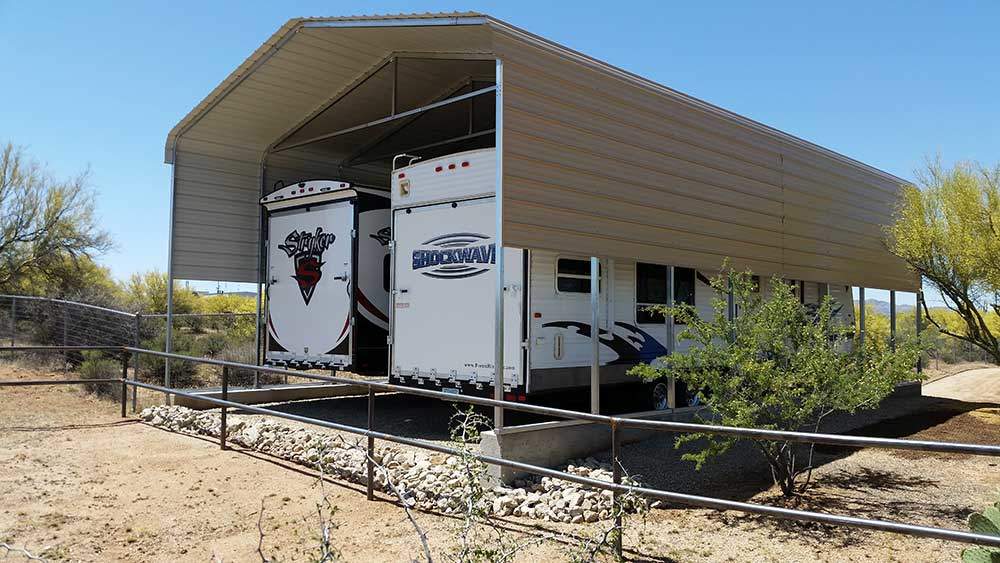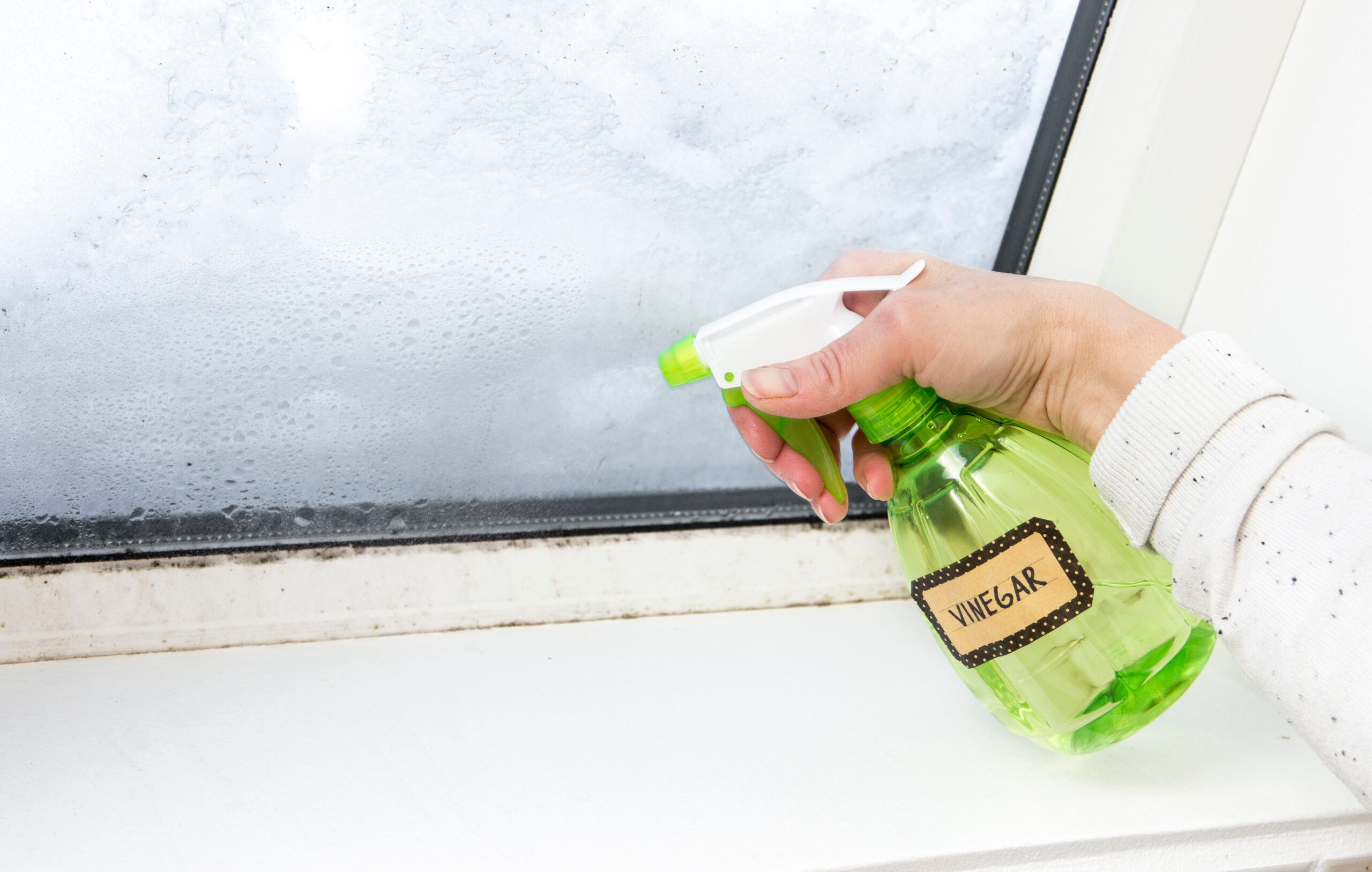
How Do You Build A DIY RV Carport?
As much as we would all love to use our RVs all of the time, the reality is most RVs spend as much and often more time stored than they do being used.
Paying for RV storage can be a big expense, especially if you have the option of covered storage.
RVs are often too large for garages and building a complete building for storage would be expensive and beyond the skill set for most RVers.
What is a carport?
Unlike a garage, a carport is generally a roof supported by posts with open sides. Oftentimes, they are built onto the side of an existing structure such as a house, garage, or barn. This gives you one closed-in wall and a roof for protection from the elements.
Carports can be constructed from a variety of materials. Commonly used materials are wooden or metal posts and support beams with metal, wood, or UV-resistant fabrics used for the roof.
Legal and safety requirements
As with any building project, you should consult your local authorities regarding building permits. Depending on your location, there may be building codes that you have to follow. Your location will also determine building considerations such as high wind, snow loads, tornadoes, and earthquakes, among others.
For the sake of this article, we will be looking at some more basic DIY types of carports that the average RVer with some basic building know-how can complete.
Some work from ladders and at heights may be required, so use caution and don’t take unnecessary risks. As always, don’t be afraid to tackle projects, but also don’t be afraid to ask for help when you need it!
Where to build your DIY RV carport
The first thing you will need to do is decide where the RV carport will be built. If you have a structure you can build beside, it will give you the added protection of one wall.
Regardless of where it is, you will want to have solid level ground where the RV is parked. Other considerations are sun exposure and wind direction. The less exposure to the elements, the better.
Options for your DIY RV carport
Building a DIY RV carport would be much easier if you could just buy a kit and assemble it, right? Well, turns out that is an option. Along with kits, there are a few other options for a DIY RV carport build.
DIY RV carport kits
RV carport kits come with everything you need and only require the ground preparation to be complete before assembly. Most kits have the option of being anchored to an existing concrete slab or to concrete piles around the perimeter.
If using an existing slab, ensure it is thick enough and will properly support the structure. If you plan to park your RV on the ground without concrete, you will require holes to be dug and filled with concrete as per the kit’s instructions.
While this is a task some people may choose to sub out, it can be easily done with hole auger rentals and pre-mixed concrete. Entire concrete slabs are, in most cases, going to be left to the professionals.
Once your base is set, the kits are pretty easy to assemble with basic tools. Any specialty tools such as concrete drills (if required) can be rented. The nice thing with kits is everything is pre-cut and labeled in most cases.
PVC piping
This option is easy to construct requiring limited fasteners and tools. However, it likely isn’t as strong as a kit or wooden structure. Fittings are simply glued together with PVC adhesive.
PVC piping can be purchased in various lengths and diameters and is easy to cut by hand. A variety of elbows, tees, and connections are available to construct any shape or size of structure you want.
This option will be better suited for smaller RVs or in a situation where the carport won’t be permanent. The cover material will have to be chosen with tarps or sunscreen material being the two most likely options.
A structure made from PVC will be very light and should be anchored even if it isn’t permanent. Sandbags placed on the bottom rails are one easy way or using some rebar drilled through the bottom rail and hammered into the ground.
Your tarp or UV-blocking material that covers the carport should also be well secured and angled in such a way that water doesn’t accumulate on top. A PVC structure won’t have the structural integrity like other methods of construction.
Wood construction
A solid wood construction structure is tough to beat. This may take a bit more construction know-how, but there are lots of videos and plans online to follow.
There are now many options for fasteners that make wood construction easier as well. Structural fasteners for corners, trusses, and support beams help with structural integrity and also make the building process faster and easier.
Posts have to be anchored securely, similar to the metal kit posts, using concrete footings. Or there are fence post-style anchors that can be hammered or screwed into the ground and hold the base of the posts.
Don’t forget to treat your wooden structure for moisture and insects!
Although a larger DIY project, building your own DIY RV carport is something you can tackle with some planning and help from friends and family.
One of the best parts about RVing is engaging with the community of traveling enthusiasts. iRV2 forums allow folks to chat with other RVers online, and get other perspectives on everything RVing, including products, destinations, RV mods, and much more.
Related articles:



